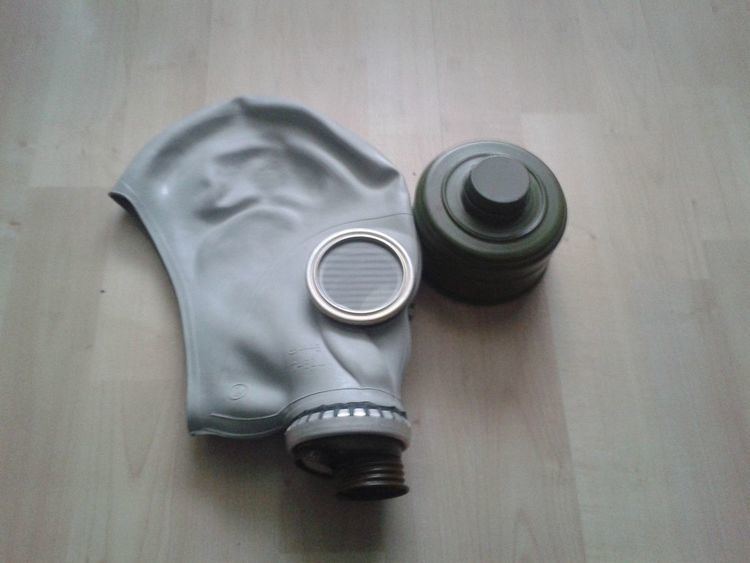 | ||
The GP-5 gas mask (Russian: Гражда́нский Противога́з-5, Grazhdanskii Protivogaz-5) is a Soviet-made single-filter gas mask. It was issued to the Soviet population starting in 1962; production ended in 1989. It is a lightweight mask, weighing 1.09 kg (2.42 lbs). It can operate in all weather and withstand temperatures from −40 degrees (Celsius and Fahrenheit) to 114 °C (237 °F). The GP-5 also comes with sealed glass eye pieces. They were originally made to protect the wearer from radioactive fallout during the Cold War and were distributed to most fallout shelters. They have been tested in Poland to see if they have NBC protective capabilities. It was concluded that the mask will last in an NBC situation for 24 hours. They are a favorite of gas mask collectors because they are common and have the "old" circular eyepieces like masks used in World War II and the "helmet" type masks. The GP-5 kit consists of SHM-62 face piece, GP-5 filter, bag and anti fogging lenses. the GP-5 kit can be also completed SHM-62u SHMP SHM-62mu face pieces.
There has been some debate as to whether or not the filters are dangerous for containing asbestos. In October 2013, an asbestos lab found out that the cotton layer of the filter contains 7.5 percent asbestos. Some claim that the filter is configured so that the asbestos can't be breathed in, so long as the filter layer isn't damaged.. Though it is also said that only the masks made in 1950's and below contain dangerous asbestos and the ones made after do not but MAY contain activated charcoal, which is only harmful if the filter is damaged and is breathed by the user of the mask, and especially so if the person breathing the charcoal has respiratory problems. Of course it is not lethal, because it is used as medical treatment for e.g. poisoning, but still is administered in health care. It is still not advised to use the filters, as the case is made with a percentage of lead which slowerly degrades into the filter, along with many other chemicals used in the manufacturing process. Furthermore, the GP-5 mask is known to tightly cling to the skin of the head, making it only wearable by having relatively short hair.
The GP-5 is widely available on the army surplus market, usually very cheaply, and as such is often used as part of Halloween or other fancy dress costumes.
A variation of the GP-5 gas mask is the GP-5m, which features a circular piece of metal that contains a thin piece of plastic on the inside, which acts as a voice diaphragm ('voicemitter'), as well as the dubious design for ear holes, which compromised the seal of the mask. The military version of the GP-5 uses a near-identical facepiece but with an elongated filter housing, to which is fitted a hose which in turn connects to a tall can-type filter which remains supported in the mask's haversack whilst the mask is worn. The GP-5 and military version were issued respectively to the civilian population and armed forces of the Soviet Union and it's Warsaw Pact allies, among which they were given differing designations. The East German armed forces designated the military version the SchM41M, and the variant with small eyepieces and a voicemitter for those with a need to use optical equipment (i.e. officers - binoculars) was known as the SchMS.
